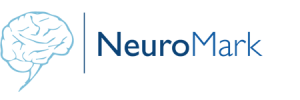As a result of increasing competition conditions, the need for differentiation, the need to gain new customers and the activities to retain the customers are pushing businesses to consumer-oriented marketing approaches. In the past, the next generation marketing trends were data-driven marketing, guerrilla marketing, integrated marketing, word of mouth, and viral marketing. But today, the important role of the internet in our lives, the deepening, development and digitalization of research methods, the latest technologies developing in the examination of neuroimaging activities, which have an important role in understanding the consumer, demonstrate that new trends have been added to those mentioned above. These are mobile marketing, digital marketing and neuromarketing. It has been realized over time that conventional marketing methods are insufficient in revealing the real thoughts that pass through the minds of the consumers. Thus, the technological methods of reaching deeper thoughts and behavioural patterns of the consumer have begun to be investigated.
Thanks to the development of technology, the process of people’s decision-making process has become measurable only with neuroscience methods, since it is linked to our neurological and biological systems. However, in order to fully explain the decision-making processes of individuals, other scientific fields such as marketing, psychology, sociology, anthropology, and economics should come together as well as neuroscience. It would be even more beneficial for these disciplines to create a chain of concepts that can be explained on a common denominator.
Historical Development of Neuromarketing
Let’s take a brief look at the historical process of neuromarketing. An American railroad worker loses his frontal lobe after an accident, but he survives. This accident, which causes the worker in question to change his character after a while, causes scientists to turn to neuroscience studies (Sal-man &Perker, 2017). First, neuroscientific research was born with the concern to unravel how people make decisions. In 1985, we see that Antonio Damasio formed the basis of neuromarketing. “Is Descartes’ Mistake the Only Truth of Neuromarketing?” Somatic Marker Theory.
Since 1985, neuroscientific research has been carried out in military research centers and universities, especially in the USA. In the 1990s, Gerald Zaltman announced that he used the fMRI device in market research, and in this way the first technological steps of neuromarketing research were taken. Ale Smidts asks: “Can we use the science of neurology, which is used to better understand people and cure their problems, to understand consumers and offer them better solutions”. In this direction, the concept of neuromarketing, which is a combination of neuroscience and marketing, emerges (Ecertaş, 2010).
Patrick Renvoise’s research on sales, marketing and neuroscience forms the basis of the method called “Selling to the Old Brain”. Read Montague, professor of neuroscience at Baylor College of Medicine, conducted the first neuromarketing study in 2003 and was published under the name “Neuron” in 2004 (Morin, 2011, p.132).
In 2012, Martin Lindstrom conducted a global neuromarketing study that had never been done before. He collected his research findings in the book “Buyology” and presented it to the market. The book was included in the neuromarketing literature and contributed to the writing and research process of many articles.
CONCLUSION: Having more than one product and service in the market makes it difficult for people to make decisions. Marketing people aim to make their products and services more preferable. With this purpose, they aim to simplify and accelerate the purchasing process. For this reason, companies need to act according to what is in the minds of consumers. The definition of neuromarketing, which has entered our lives for this purpose, is the use of techniques in neuroscience to understand the response of the human brain to marketing stimuli. Its main purpose is to better understand and predict the unconscious behavior of consumers. If the slogan “Neuroscientists and Market Researchers Hand in Hand” is adopted, important success stories can be achieved in many neuromarketing studies.




